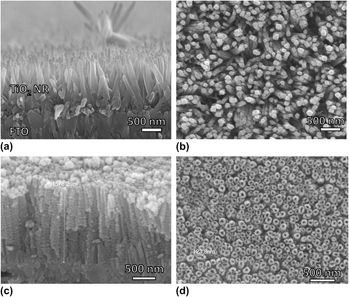Crossref Citations
This article has been cited by the following publications. This list is generated based on data provided by
Crossref.
Miller, Derek R.
Akbar, Sheikh A.
and
Morris, Patricia A.
2014.
Nanoscale metal oxide-based heterojunctions for gas sensing: A review.
Sensors and Actuators B: Chemical,
Vol. 204,
Issue. ,
p.
250.
Chen, Kansong
Feng, Xinran
Tian, Han
Li, Yang
Xie, Kun
Hu, Rui
Cai, Yaxuan
and
Gu, Haoshuang
2014.
Silver-decorated titanium dioxide nanotube arrays with improved photocatalytic activity for visible light irradiation.
Journal of Materials Research,
Vol. 29,
Issue. 11,
p.
1302.
Pai, Mrinal Rajesh
Banerjee, Atindra Mohan
and
Bharadwaj, Shymala Rajkumar
2015.
Effect of transition metal ion doping on photocatalytic properties of In–Ti oxides.
Journal of Materials Research,
Vol. 30,
Issue. 21,
p.
3259.
Li, Zhengcao
Xiong, Shan
Wang, Guojing
Xie, Zheng
and
Zhang, Zhengjun
2016.
Role of Ag2S coupling on enhancing the visible-light-induced catalytic property of TiO2 nanorod arrays.
Scientific Reports,
Vol. 6,
Issue. 1,
Ramakrishnan, Vivek
Kim, Hyun
Park, Jucheol
and
Yang, Beelyong
2016.
Cobalt oxide nanoparticles on TiO2nanorod/FTO as a photoanode with enhanced visible light sensitization.
RSC Advances,
Vol. 6,
Issue. 12,
p.
9789.
Shaislamov, Ulugbek
Krishnamoorthy, Karthikeyan
Kim, Sang Jae
Chun, Wongee
and
Lee, Heon-Ju
2016.
Facile fabrication and photoelectrochemical properties of a CuO nanorod photocathode with a ZnO nanobranch protective layer.
RSC Advances,
Vol. 6,
Issue. 105,
p.
103049.
Shaislamov, Ulugbek
Krishnamoorthy, Karthikeyan
Kim, Sang Jae
Abidov, Amir
Allabergenov, Bunyod
Kim, Sungjin
Choi, Sooseok
Suresh, Rai
Ahmed, Waqar Muhammad
and
Lee, Heon-Ju
2016.
Highly stable hierarchical p-CuO/ZnO nanorod/nanobranch photoelectrode for efficient solar energy conversion.
International Journal of Hydrogen Energy,
Vol. 41,
Issue. 4,
p.
2253.
Carrera-Crespo, J. E.
Ghilane, J.
Randriamahazaka, H.
Ammar, S.
and
González, Ignacio
2017.
Effect of the Support Nanostructure (Nanofibers and Nanotubes) on the Photoelectrochemical Performance of TiO2-CdO@CdS Semiconducting Architectures.
Journal of The Electrochemical Society,
Vol. 164,
Issue. 6,
p.
H286.
Li, Chia-Jui
Tseng, Chuan-Ming
Lai, Sz-Nian
Yang, Chin-Ru
and
Hung, Wei-Hsuan
2017.
Photocatalytic Activities Enhanced by Au-Plasmonic Nanoparticles on TiO2 Nanotube Photoelectrode Coated with MoO3
.
Nanoscale Research Letters,
Vol. 12,
Issue. 1,
Nam, Bumhee
Ko, Tae-Kyoung
Hyun, Soong-Keun
and
Lee, Chongmu
2019.
NO2 sensing properties of WO3-decorated In2O3 nanorods and In2O3-decorated WO3 nanorods.
Nano Convergence,
Vol. 6,
Issue. 1,
Park, Eunoak
Patil, Santosh S.
Lee, Hyeonkwon
Kumbhar, Vijay S.
and
Lee, Kiyoung
2021.
Photoelectrochemical H2 evolution on WO3/BiVO4 enabled by single-crystalline TiO2 overlayer modulations.
Nanoscale,
Vol. 13,
Issue. 40,
p.
16932.
Park, Sunghoon
Jung, Young Woo
Ko, Gwang Min
Jeong, Dae Yong
and
Lee, Chongmu
2021.
Enhanced NO2 gas sensing performance of the In2O3-decorated SnO2 nanowire sensor.
Applied Physics A,
Vol. 127,
Issue. 12,
Gurylev, Vitaly
2022.
Advancement of Metal Oxide Materials for Photocatalytic Application.
p.
157.
Samage, Anita
Gupta, Pooja
Halakarni, Mahaveer A.
Nataraj, Sanna Kotrappanavar
and
Sinhamahapatra, Apurba
2022.
Progress in the Photoreforming of Carboxylic Acids for Hydrogen Production.
Photochem,
Vol. 2,
Issue. 3,
p.
580.





